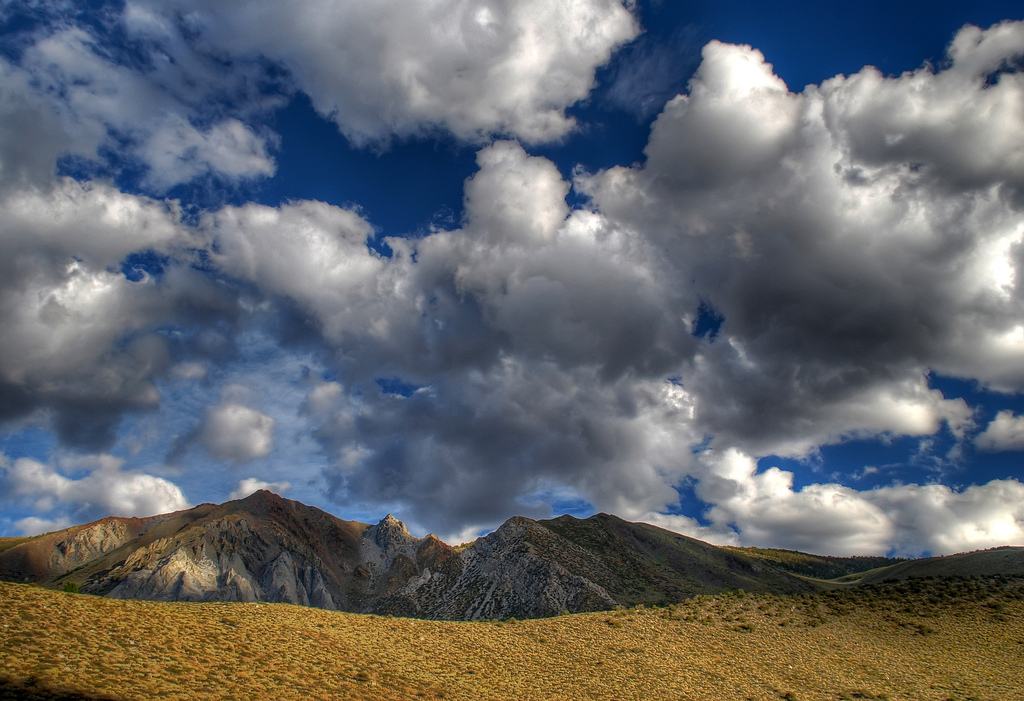The persistent drought that has gripped California for the past year has meant that few storms are crossing through the state. So when they do, state water managers want to extract every bit of water they can — and then some, which is why they’re increasingly turning to seeding the clouds for rain.
Cloud seeding began as an experimental practice in the late 1940s that eventually became a yearly occurrence for water agencies and hydroelectric utilities. Over the winter period, there are approximately 12 cloud seeding projects across California that operate across 15 watersheds from Lake Almanor to the San Gabriel River.
The process involves releasing a silver iodide vapor, sometimes supplemented with dry ice, into a cloud system to increase snowfall or rainfall. The silver iodide works by inducing nucleation — meaning the water in the air condenses and crystallizes to form ice particles. The silver iodide is dispersed by aircraft or from dispersion devices located on the ground.
In cold air temperatures, such as in the Sierra Nevada mountain range, where much of California’s cloud seeding takes place, the particles will increase the amount of snowfall, thereby increasing the amount of water that reaches the state’s water-storage reservoirs. The Sacramento Municipal Utility District also seeds clouds over its hydroelectric reservoirs to produce more water to generate electricity.
“Our focus is on snowpack and we can only seed an active, cold storm,” said Dudley McFadden, a civil engineer at the Sacramento Municipal Utility District.
Cloud seeding can also take place in areas without snowfall, meaning that precipitation will fall as rain. In 2011 Santa Barbara county and Monterey county undertook cloud seeding projects to increase the amount of rainfall reaching their major reservoirs. Monterey County Water Resources will not continue its cloud seeding program this year for budget reasons.
In a recent report, the California Department of Water Resources estimated that the state’s cloud seeding projects combined generate an average of 400,000 acre-feet of additional runoff each year at an estimated cost of $2.27 per acre-foot to seed the clouds.
“The message is starting to sink in that this is a cost-effective tool,” Jeff Tilley, director of weather modification at the Reno-based Desert Research Institute told the Sacramento Bee. “The technology is better; we understand how to do cloud seeding much better. And because we know how to do it more effectively, it’s definitely taken more seriously.”
However, there has been doubt about the effectiveness of cloud seeding. A 2003 report from the National Research Council concluded that while cloud seeding can modify a cloud’s development and precipitation, scientists are unable to “confirm that these induced changes result in verifiable, repeatable changes in rainfall, hail fall, and snowfall on the ground.”
There have also been environmental concerns about the impact of silver iodide flowing downhill and remaining in the environment. The Weather Modification Association states that there is little additional silver accumulation above what is naturally present in areas where cloud seeding has taken place. In 2012, SMUD released around 16kg of silver iodide through their cloud seeding projects— a small amount when compared to other emissions, McFadden said.
“Silver iodide is a compound which is inert and it is elemental silver that is toxic to microorganisms,” he said. “Researchers have tried to find out how silver iodide might change into elemental silver, and everything I have read suggests that this is not the major fate of silver iodide.”





